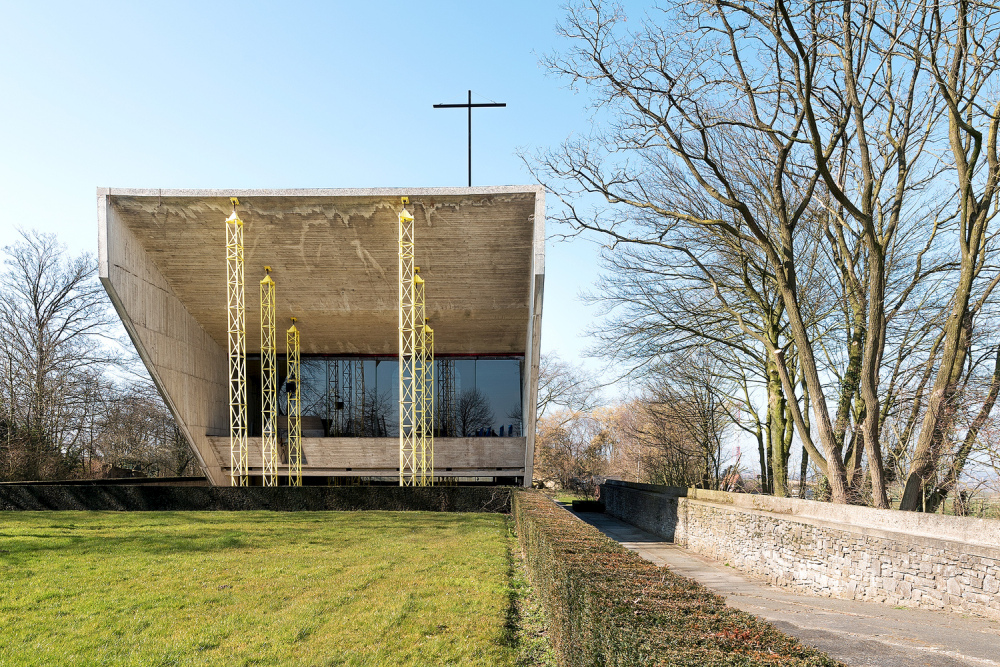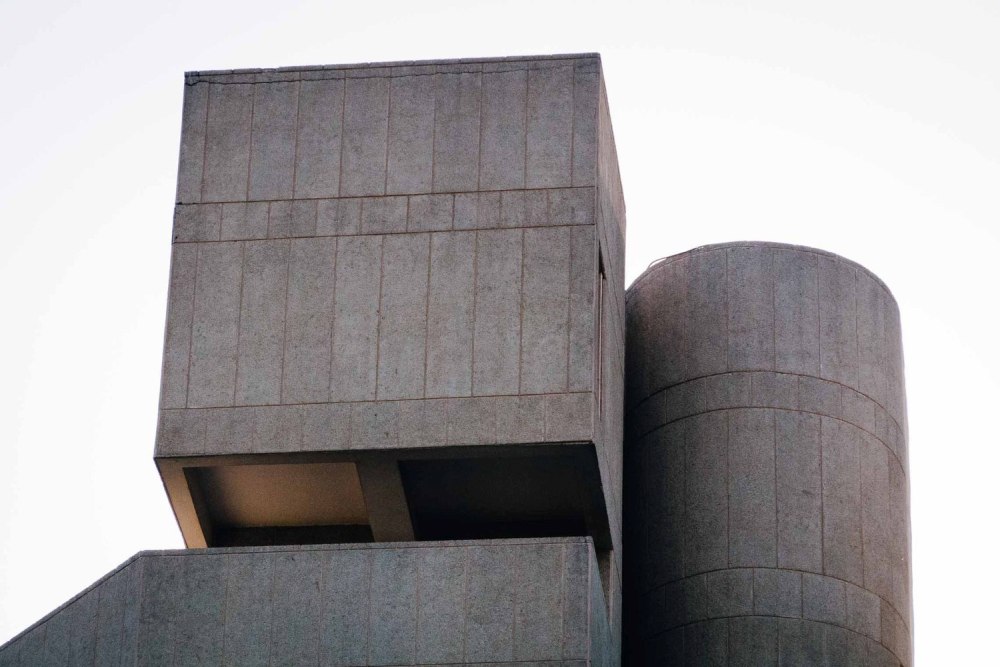In today’s world, there are hundreds of different styles of architecture. One type of architecture that doesn’t get enough credit where credit is due is brutalist architecture. You may have heard of this term.
Brutalist architecture is a type of architecture that is primarily made from concrete and seen in urban settings. It is often used in dystopian films due to the austere and often utilitarian nature of the buildings.
What Is Brutalism?
Brutalism is a type of architecture that you will either hate or you will love. It can be considered a maximalism style architecture due to the large frames and the bold style though it is not often used for private homes.
Don’t know how to spot brutalism? Well, you are in luck because there are a few things you can look at to find out if a structure has a brutalist history. Here are factors that make up a brutalist structure.
Concrete
This is the single most important component of a brutalist structure. It must be made primarily out of concrete. There can and will be other materials, such as rebar, but most of it will be concrete or CMU.
Because during the time that brutalism was popularized, concrete was rare. It was considered high-end and very modern. So it was used in this new type of architectural design to show off the wealth of the owners.
Blocky or Geometric
Brutalism is all about geometric and blocky designs. But it isn’t dainty and blocky, but rather bulky and blocky. Whereas other designs would be similar to standard Legos, brutalist designs are similar to Mega Bloks.
You can get creative with this design by introducing pentagons, octagons, and more, but the base should be made with squares. Most brutalist designs are made with nothing but squares and rectangles.
Art In Mind

Brutalism may be blocky but it is also done with taste. It isn’t simply a few CMU blocks stacked on top of each other in a haphazard manner. Brutalist architecture is done to express creativity and is a work of art.
This is just one type of art and can be implemented into anything. You can use soft touches if you want but the base of the art and your canvas should be sharp and aesthetically pleasing.
Overhangs
This isn’t always present but it is very common for the top half of a brutalism building to be larger than the bottom half. It creates a mushroom-like shape only it is blocky like an 8-bit mushroom from a video game.
But remember that this feature isn’t always present it is just present more often in brutalism than almost any other type of architecture. It is important to implement it when you can for that added energy.
Little To No Color Variation
Think monochromatic designs with this one. Brutalism makes lack of color cool. Like a dark and alluring dystopian landscape. That’s something that makes it special, the neutral-colored design with little to no color.
There’s nothing wrong with a dark landscape either. Some people are drawn to this type of design and are even calmed by it while others are calmed by whites, blues, and the sound of the ocean.
Small Windows
Large windows can be immaculate and really draw the eye to a gorgeous structure. But small windows, often many small windows, are more popular for brutalist buildings. They put the focus on the other features.
You can add large windows to a brutalist building but it isn’t ideal. It can take away from the bulkiness and dreariness of the structure. If you do, it’s a good idea to add blackout curtains or something to weigh it down.
The History Of Brutalism
Brutalism was a popular mid-century modern style that reigned in the 1950s, 1960s, and 1970s. Brutalist architecture in the 1950s was made to celebrate modernism and the progressive nature of the world.
It is believed that an architect named Le Corbusier was one of the first brutalist designers with the help of designer Reyner Banham to popularize the new type of structure. The inspiration? Post-war progression.
By the 1960s it was seen in nearly every country on earth and by the 1970s, everyone had heard of this unique style of architecture. The fight to keep this style alive wasn’t as easy as spreading the news the first time around.
Modern Brutalism
Although primarily a mid-century modern, brutalism is still alive today. The popularity of this style seemed to disappear during the 1980s and was nearly non-existent in the 1990s and 2000s when it came to new constructions.
This was because the previous brutalism structures didn’t age well and often fell to water damage and more. But it was more than that. The old structures were seen as cold and were somehow associated with totalitarianism.
The name itself is enough to deter a lot of people. Brutal is not the best name for something that is to be seen as art. But the name actually comes from the French term for raw concrete rather than a brutal nature.
So today, we’ve learned not to judge a book by its cover. We can create anything and it can be created for good, it can be appreciated as art. that’s why brutalism is making a comeback. That is if enough people can see its beauty.
Amazing Brutalism Architecture
Brutalism can be appreciated by anyone even if that person isn’t a fan of the style. You just need to find the right brutalism projects that stand out and are created with creativity and utilitarianism in mind.
Here are some amazing brutalist designs from all over the world to give you an idea of just how diverse brutalism can be.
Medellin’s Comuna 13

This area was once one of the dangerous places in Columbia. But thanks to some unique masking graffiti and brutalist designs, it has become more of a tourist attraction than anything, bringing families from all over near.
Belgian Architect’s Masterpiece

One of Belgian greatest brutalist architects passed away not long ago, so of course, we had to add him to the list of some of the greatest brutalism designs. He began his work in the 1940s and started his own business in 1950.
The man was one of the few brutalist architects that focused on residential buildings rather than commercial buildings. He truly loved the brutalist designs and believed that the designs belonged at home.
Uzbek Union Of Artists

There are many Soviet and Central Asian architectural designs with heavy brutalism influences. In the 1970s, many brutalist structures were built and established in Uzbekistan that are still some of the most amazing structures on earth.
One of these structures is known as Circus in Tashkent which adds tiny touches of color to set it apart from other brutalist structures. But that’s not its most outstanding feature because that would be its unique flying saucer shape.
North Caucasus Beauties

North Caucasus is known for its beautiful art and statues scattered across the region. But it may be the brutalism found therein that attracts the most attention and deserves the most praise due to its uniqueness.
Though the statues built off of the side of cliffs are amazing, a certain hotel called Hotel Amanauz is in a league of its own. The hotel looks like something out of a horror movie and the Jetsons all at the same time.
Indian Brutalism

When you imagine brutalism, your mind probably doesn’t cross over the border to India. That’s because India doesn’t feature much brutalism, choosing instead to focus on other types of architecture.
But that doesn’t mean it doesn’t exist in the country. New Dehli has attracted a lot of new attention due to Brutal Dehli which is a photography website that was created do show off the brutalism of the territory.
Cydney Ross’s Sculptures

The term brutalism is almost always used to describe architecture in buildings. But the truth is that brutalism is also an art style that can be applied to any branch of art. A certain designer named Cydney Ross proves this to be true.
She uses brutalism as an inspiration to create masterpiece after masterpiece. Each piece is unique with touches of cultures of all kinds sculpted into each structure. They truly are sights to behold so keep an eye out for her name.
Beersheba Divinity

Beersheba is a very old city in one of the oldest countries on earth: Israel. But of course, it took thousands of years for brutalism to sprout up and draw new crowds when the Statue of Israel was formed in 1948.
This statue was the first of many amazing Israelite designs across the country, but Beersheba will always be the father of brutalism in the country. So when you are there for Jerusalem, pay Beersheba a visit.
The post Brutalist Architecture: It May Not Be What You Think appeared first on Home Decorating Trends - Homedit.



0 Commentaires